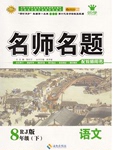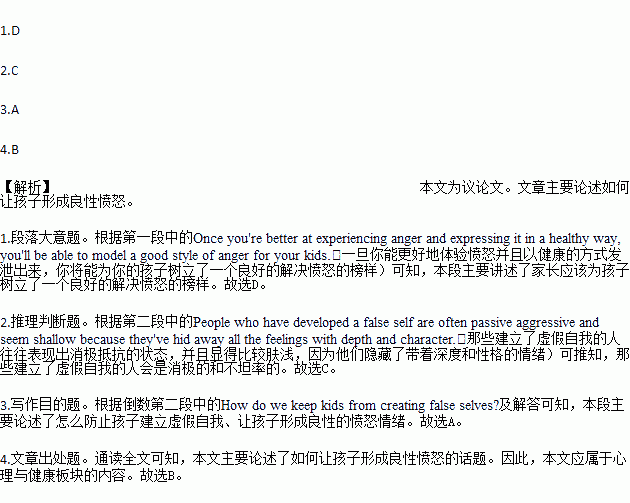题目内容
Anger often makes us uncomfortable. When you find your anger too uncomfortable to process, please let it go. But remember to create a healthy anger in your children is to practice creating a healthy anger in yourself. Once you're better at experiencing anger and expressing it in a healthy way, you'll be able to model a good style of anger for your kids.
Some kids deal with anger by creating a "false self": a child who is perfect for their parents. People who have developed a false self are often passive aggressive and seem shallow because they've hid away all the feelings with depth and character.
How do we keep kids from creating false selves? We need to raise them in an environment where it's safe to express feelings. Once you feel more comfortable with your own anger, you can teach your children why anger is a helpful emotion. When your kid expresses anger, help them examine what it is that has made them angry. Why did it make them angry? How did it do that? Then, you can teach them that while emotions are never wrong and are always valid, our expressions of our emotions are within our control.
People who are afraid of their own anger will never learn how to listen to what their anger is trying to tell them. Instead of teaching our kids that their anger is wrong, that "happy families" are never angry, or that all feelings of anger lead to violence and fear, we can teach our children that anger is OK. Anger is natural, it is normal, and it can be experienced and expressed in a healthy way.
1.What is the main idea of the first paragraph?
A. Anger makes us uncomfortable.
B. Anger is difficult to deal with.
C. Parents often lose their temper at home.
D. Parents should model a good anger style.
2.What would a child be like if he developed a “false self”?
A. Polite and optimistic.
B. Perfect and helpful.
C. Negative and indirect.
D. Rude and dishonest.
3.What’s the main purpose of the last 2 paragraphs?
A. To give tips to create healthier anger.
B. To suggest ways to avoid anger.
C. To show the harm anger does to kids.
D. To stress the importance of expressing anger.
4.In which part of a website can we read the passage?
A. Food& Recipes
B. Psychology & Health
C. Life & Entertainment
D. School& Education
 优学名师名题系列答案
优学名师名题系列答案
